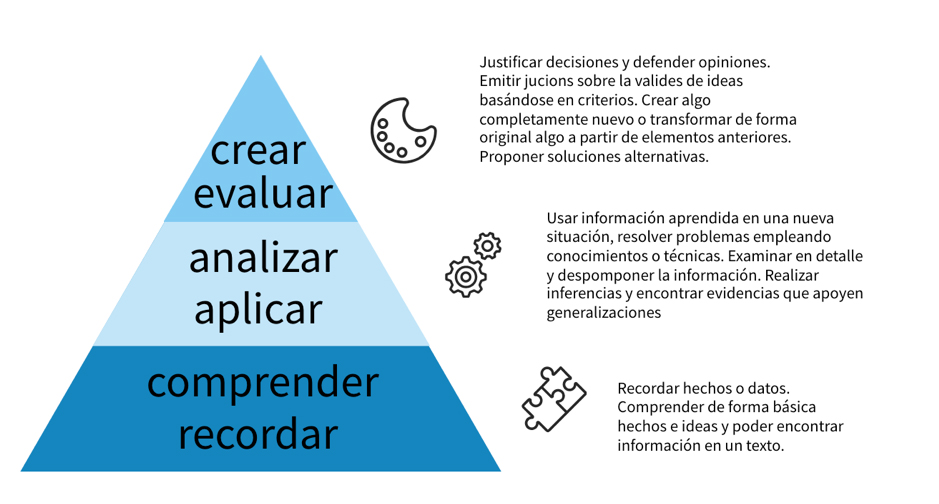From Bloom’s taxonomy to Marzano and Kendall’s
Bloom’s taxonomy is one of the most popular taxonomies for organising the cognitive functions we use in our teaching proposals. It organises learning objectives according to their complexity. Thus, according to the most popular version of this taxonomy, the activities proposed to learners may involve lower-order cognitive processes (remembering and understanding) or higher-order ones (evaluating and creating).

This approach has been dominant in education for the last few decades and has helped the teaching community to design better learning experiences for their students. Although they are still widely mentioned and used today, new learning methodologies are more in line with a proposal developed in 2008 by researchers Robert Marzano and John Kendall, to update Bloom’s original taxonomy (which dates back to 1956) and make it more practical.
The two taxonomies address different dimensions: the Bloom method only deals with cognitive aspects, while Marzano and Kendall emphasise metacognition and the self-system, treating the cognitive system in a more practical and motivational way. In contrast, Bloom’s taxonomy includes metacognition as a form of knowledge, but does not place special emphasis on this dimension, nor does it include any reference to problem-solving (although aspects of critical thinking are included in the evaluation and creation levels of the taxonomy).
Consequently, Marzano and Kendall’s taxonomy is more suitable for structuring didactic proposals based on computational thinking. What characteristics of this proposal make it the best alternative?
- It explicitly recognises the primacy of the self-system in learning, as well as the importance of the metacognitive system
- It explicitly addresses problem-solving, within the “use of knowledge”, being a key aspect of learning, especially for knowledge transfer.
- It provides a framework for identifying higher-order thinking skills.
Using these advantages as a basis, it is possible to propose CT learning experiences that form a complete and coherent didactic proposal, based, for example, on the following phases:

Activating prior knowledge: examples of activities belonging to the first phase are assemblies or activities of exploration and the search for information which activate prior knowledge and link it to the proposed topic, while at the same time facilitating the motivation of students to resolve the challenge.
Fostering the understanding of knowledge: in the second phase, research activities, synthesis and representation of information could be included, so that we foster the understanding and articulation of knowledge in relation to the challenge being worked on.
Analysing similar experiences: we will find proposals for analysing similar experiences and we can use what we have learned to design our ideas.
Applying what has been learnt: at this point the project is fully developed and justified, the process is explained, showing what we have got right and what mistakes we have made, along with the application of what has been learnt.
In this way, by using this taxonomic framework to design didactic practices involving computational thinking, it is possible to activate not only cognitive elements, but also metacognitive and motivational ones, making the most of its pedagogical effectiveness.
References:
Irvine, J. (2018). A comparison of revised Bloom and Marzano’s New Taxonomy of Learning. Research in Higher Education Journal






